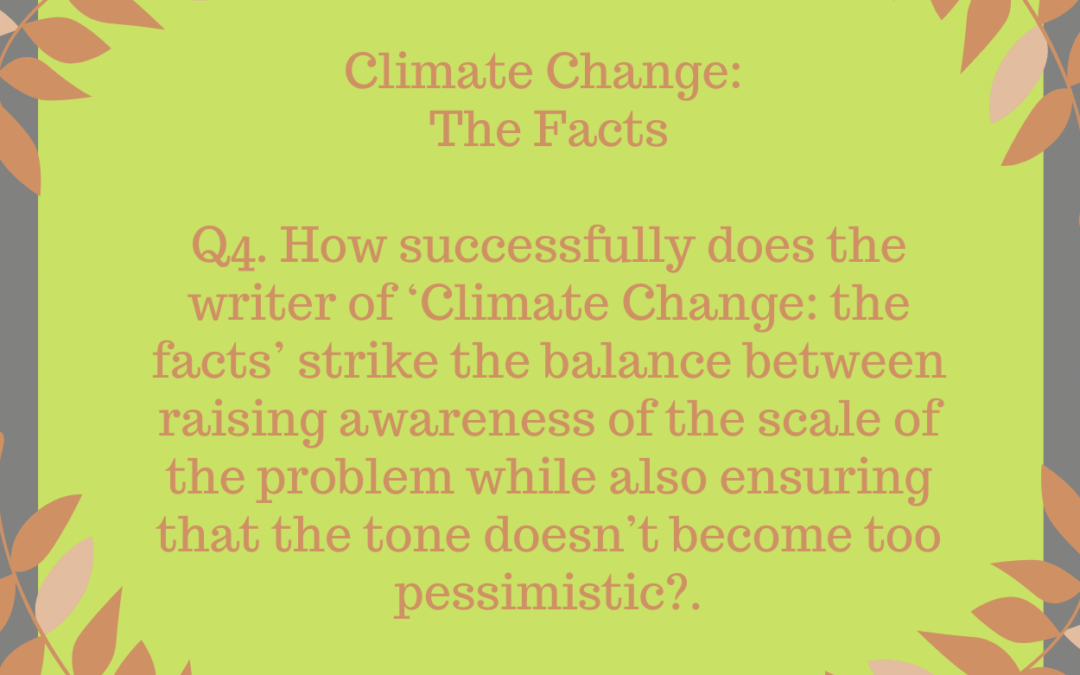Edexcel English IGCSE: Climate Change: The Facts
Q4. How successfully does the writer of ‘Climate Change: the facts’ strike the balance between raising awareness of the scale of the problem while also ensuring that the tone doesn’t become too pessimistic?
Edexcel English IGCSE Model Essay by an Expert
In ‘Climate Change: The Facts’, the writer is tackling a very serious issue. However, as she is writing a newspaper article aimed at non-experts, it is important that the writer keep a relatively light-hearted tone, in order to make the article appealing to the audience.
The writer successfully portrays the seriousness of climate change with statistics and emotive language. Statistics are provided to give reliable scientific support to the writer’s claims; they paint a picture of a worsening situation, in which the climate is becoming warmer. These statistics are supported by less scientific terms, which makes the article accessible to people who are not necessarily confident in understanding statistics. However, whilst avoiding an overly-scientific tone, these more colloquial descriptions of the changes in the global atmosphere are no less depressing: “relentless rise”, “sky high” and “vast quantities”, for example. Some of these examples also contain alliteration and assonance, which contribute to a sense of drama. Similarly, emotive language such as “dramatic change” and “trigger”, which has associations with violence and trauma, evoke fear and anxiety in the reader about climate change. The writer suggests that we are losing control of the situation with references to “runaway greenhouse effect” and “extreme weather”. Thus the writer highlights the severity of the situation relating to climate change.
Although the writer emphasises the danger of climate change, she attempts to keep the tone of the article relatively light-hearted. For example, the use of questions in the heading and subheadings creates an inquisitive tone, which sounds like a conversation or an informal interview. Idiomatic phrases such as “hot potato”, “nasty sting in its tail” and “fringe subject” also contribute to the conversational tone, since they are not often used in formal writing. The writer also uses mildly amusing images, such as “farting cows” and “sitting in our deckchairs all year round”, to lighten the mood when discussing the serious issue of climate change. By ensuring that the tone is relatively light-hearted, the writer keeps the interest of the reader, and avoids a tone which is too ‘preachy’, which might dissuade the reader from continuing. The images also contribute to the writer’s attempts to keep the article light-hearted. The pictures have bright, primary colours, which are attractive to the reader. The main image in the centre of the page contains attractive silhouettes to show the different levels of the atmosphere, namely the satellites, mountains, river and cityscape.
However, with such serious subject-matter, it is impossible to avoid pessimism, despite the writer’s effort to keep things relatively light-hearted. The article delivers the depressing message that humans are responsible for climate change, and it is now too late to reverse the effects. Whilst it is important to keep the reader’s interest with an enjoyable and accessible article, the writer does not shy away from delivering its hard-hitting message.



